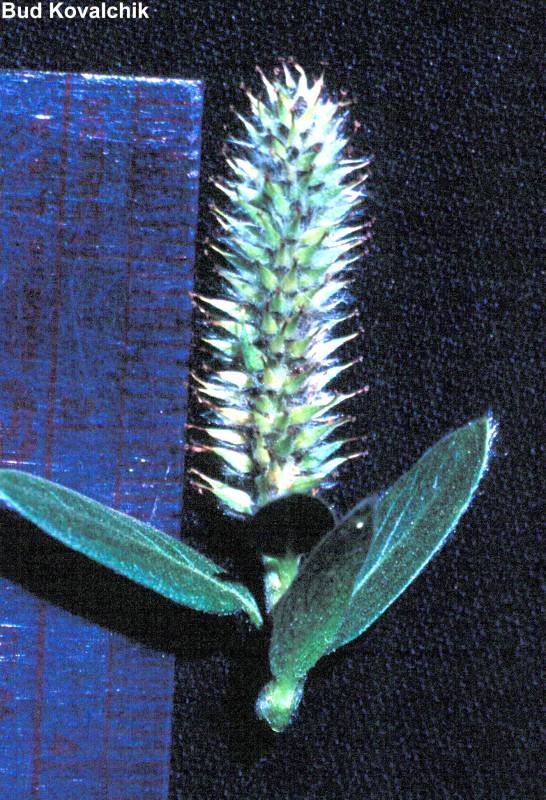Hosted by the University of Washington Herbarium, Burke Museum
Publication: Cat. N. Amer. Pl. ed. 3. 89. 1910. (as fastwoodiae). 1910.
Origin: Native
selected vouchers: Not at WTU; WS?
Notes: Not in H&C; apparently a portion of the S. commutata plants from WA should be C. eastwoodiae.
FNA7: "Salix eastwoodiae and S. commutata are distinct species with different ploidal levels, the former tetraploid and the latter diploid; where they come into contact in the Pacific Northwest, hybrids occur and vegetative plants are often difficult to separate. See comparison below. The most important difference is that ovaries of S. eastwoodiae usually are silky turning glabrescent in age and those of S. commutata are glabrous. Populations occur in Oregon with both glabrous and hairy ovaries without any other evident differences. There are also unusual specimens, which are often tentatively identified as S. eastwoodiae, that have glabrous ovaries and patches of hairs at the base and on the sutures. The possibility that they are hybrids between S. eastwoodiae and S. boothii, S. commutata, or S. lemmonii needs study.
Salix commutata is distinguished from S. eastwoodiae by having leaf blades sometimes amphistomatous, 1.5-3.4 times as long as wide, teeth 0-19 per cm, adaxial surfaces glabrous or pilose to villous, floral bracts tawny to brown, staminate and pistillate adaxial nectaries oblong to square, and ovaries glabrous; S. eastwoodiae has leaf blades hypostomatous, 1.8-5 times as long as wide, teeth 0-10 per cm, adaxial surfaces tomentose or long-silky, floral bracts brown to black, staminate and pistillate adaxial nectaries narrowly oblong to oblong, and ovaries silky to glabrescent.
Hybrids:
Salix eastwoodiae forms natural hybrids with S. arizonica, S. boothii, and S. commutata.
Salix eastwoodiae × S. lasiandra was found in Sierra County, California, growing with both parents in a wetland along a disturbed roadside. It had leaf indumentum and hair color of S. eastwoodiae and leaf shape and margins of S. lasiandra. Catkins of this intersubgeneric hybrid were teratological and presumably infertile."
References: (none)

